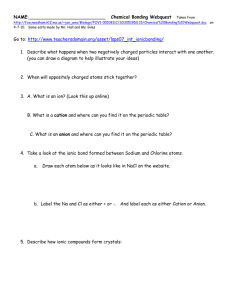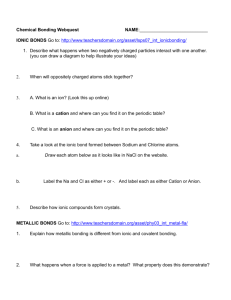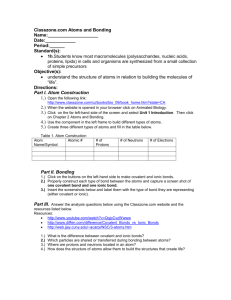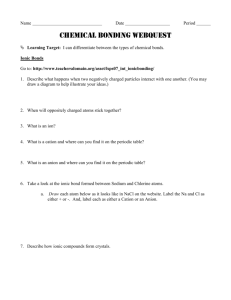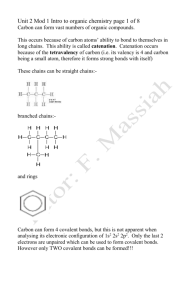Chemical_Bonding_Webquest
advertisement
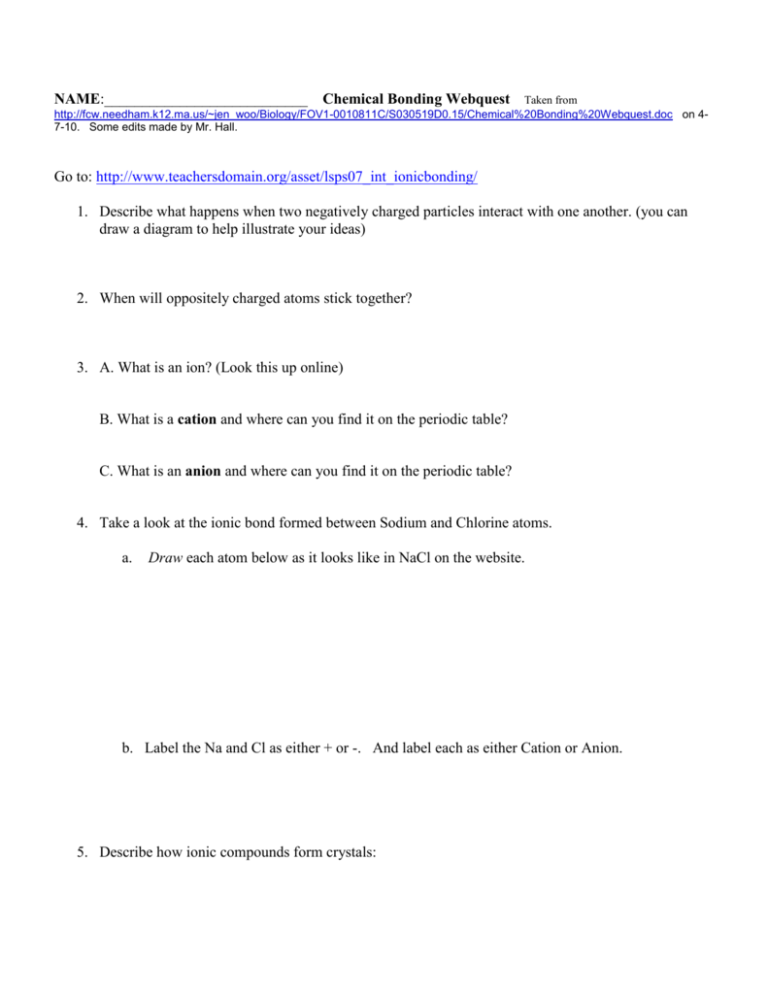
NAME:___________________________ Chemical Bonding Webquest Taken from http://fcw.needham.k12.ma.us/~jen_woo/Biology/FOV1-0010811C/S030519D0.15/Chemical%20Bonding%20Webquest.doc on 47-10. Some edits made by Mr. Hall. Go to: http://www.teachersdomain.org/asset/lsps07_int_ionicbonding/ 1. Describe what happens when two negatively charged particles interact with one another. (you can draw a diagram to help illustrate your ideas) 2. When will oppositely charged atoms stick together? 3. A. What is an ion? (Look this up online) B. What is a cation and where can you find it on the periodic table? C. What is an anion and where can you find it on the periodic table? 4. Take a look at the ionic bond formed between Sodium and Chlorine atoms. a. Draw each atom below as it looks like in NaCl on the website. b. Label the Na and Cl as either + or -. And label each as either Cation or Anion. 5. Describe how ionic compounds form crystals: COVALENT BONDS Go to: http://www.teachersdomain.org/asset/lsps07_int_covalentbond/ 1. If an atom, such as hydrogen, is able to form a covalent bond, describe what happens when the electron shells of two atoms overlap: a. What happens when the two atoms are fairly close? b. What happens when the two atoms are TOO close? 2. What does the nucleus of an atom want to do to its own electrons? 3. What does the nucleus of one atom want to do to the electrons of a nearby atom? 4. Are the atoms really “sharing” electrons? 5. What type of atoms form covalent bonds? 6. Draw a graph showing the change in potential energy when atoms form covalent bonds. 7. What happens to the stability of atoms when they form covalent bonds? 8. A line can be used to represent a covalent bond between two atoms. Diagram pairs of atoms that can form single, double, and triple bonds. 9. Can every atom form each of these kinds of bonds?
